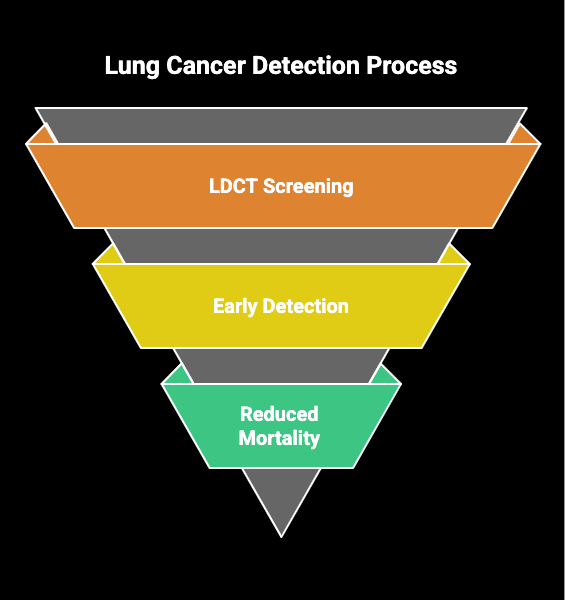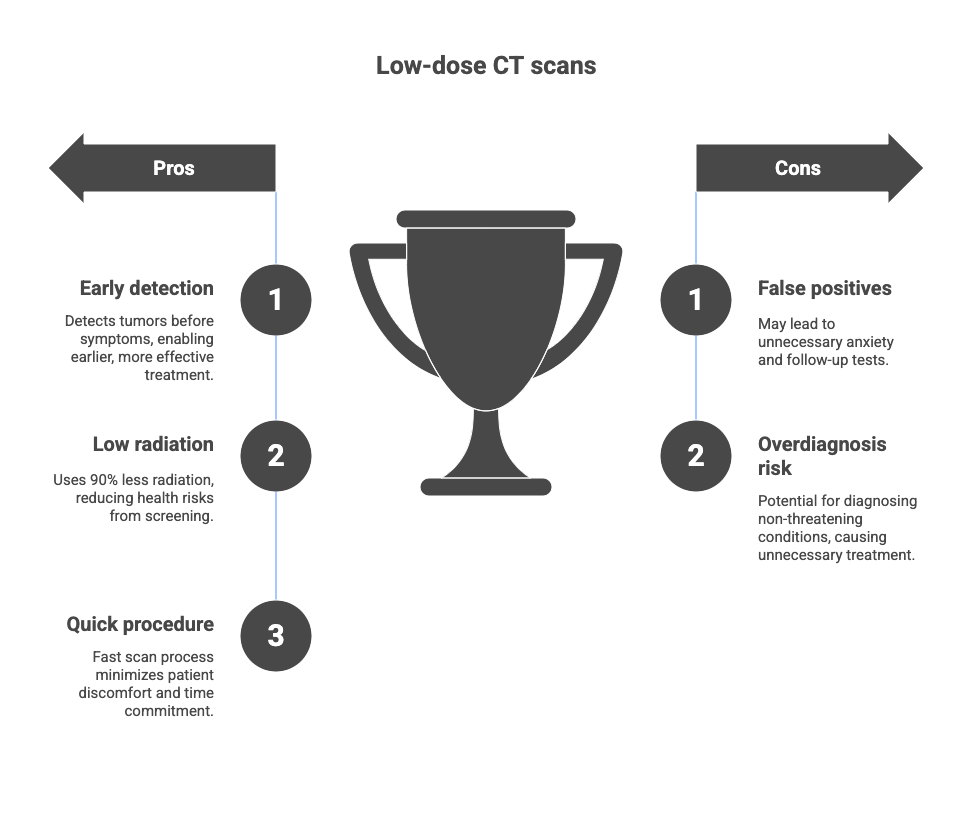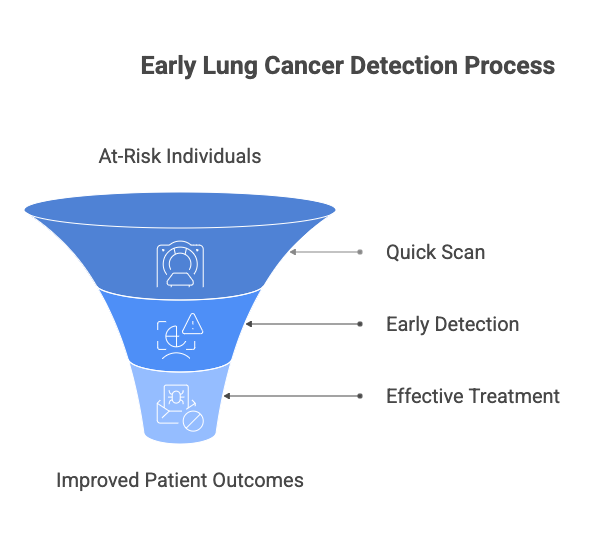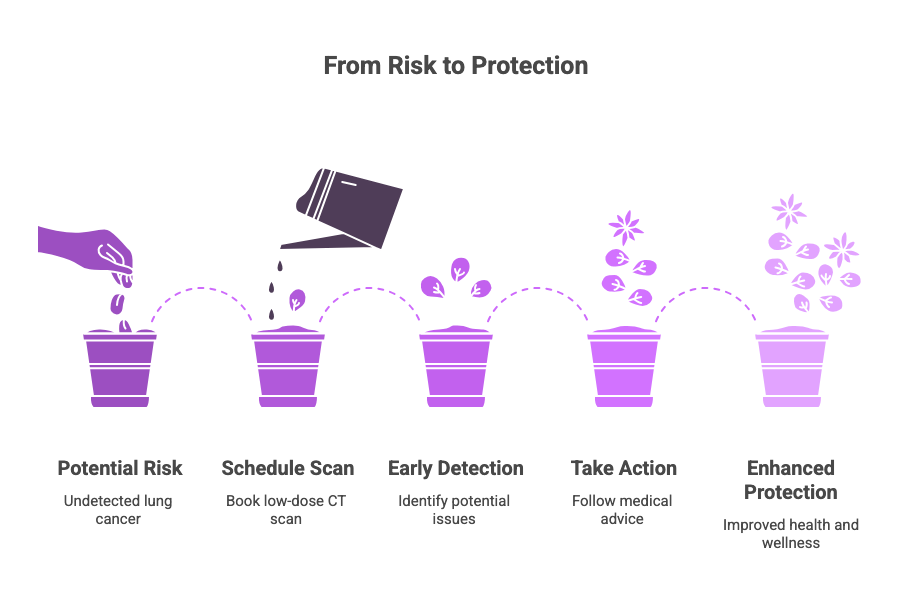Key Highlights
- Lung cancer is the top cause of cancer deaths in the United States. Early detection can make survival rates much higher.
- A Low Dose CT (LDCT) scan can lower the number of deaths in high-risk people. It does this by finding lung cancer before there are any signs or symptoms.
- National guidelines say LDCT screening should be used for some high-risk groups. This is mostly for long-term smokers who are 50 to 80 years old.
- LDCT gives off less radiation than regular CT scans. It is also better than chest X-rays when you want early detection of lung cancer.
- There is a risk of false positives, but new technology and artificial intelligence now make the scans much more correct and lower the risk to people.
- If you are eligible, your insurance can cover LDCT screening. This lets more people in the United States get early detection for lung cancer.

Detect Lung Cancer Early with Low Dose CT Scans
Lung cancer continues to be one of the deadliest forms of cancer, claiming more lives every minute than any other type. However, there’s an effective method that can significantly improve the chances of survival: early detection. This can be achieved through the use of low-dose CT scans, a transformative tool in the fight against lung cancer.
What is a Low Dose CT Scan?
A low-dose CT scan is a quick, low radiation scan specifically designed to spot tumors before they become symptomatic. This means that the cancer can be detected at an earlier, more treatable stage. The scan uses 90% less radiation compared to a regular CT, making it a safer option for regular screening.

Who Should Consider a Low Dose CT Scan?
According to the United States Preventive Services Task Force, individuals between the ages of 50 to 80 who have smoked 20 pack-years or more, and either currently smoke or have quit within the last 15 years, should consider undergoing an annual low-dose CT scan. This recommendation is crucial for those at higher risk, as early detection greatly increases the chances of survival.
The Benefits of Early Detection
The ability to detect lung cancer early can drastically change the odds for those at risk. With a scan taking just seconds, this quick procedure is the number one way to catch lung cancer before it advances to a more critical stage. Early detection can lead to more effective treatment options and significantly better outcomes for patients.

Coverage and Access
The good news is that Medicare and most major insurance providers cover the cost of a low-dose CT scan. This coverage ensures that more individuals at risk have access to this life-saving technology without the burden of high out-of-pocket expenses.
Take Action Now
At Kundlas MD, we are committed to providing the best in early detection and protection. Don’t wait to schedule your low-dose CT scan. The sooner you act, the better the outcome can be.
If you haven’t already, make sure to like, share, and subscribe to our channel to stay informed on the latest updates in lung cancer detection and prevention. Remember, our lead detection truly is protection. Schedule your low-dose CT today and take a vital step towards ensuring your health and wellness.

Frequently Asked Questions About LDCT Scans
Low dose CT scans, or LDCT, are now often used for lung cancer screening. A lot of people want to know if these scans are safe and how well they work to find lung nodules. Many ask about the risk of radiation that comes from these scans. Some also worry about false positives. A false positive can make someone feel stress if the scan shows something that is not cancer.
It is important to talk with a primary care physician about any worries or questions you have about low dose CT. A primary care physician can talk with you about your risk factors and tell you what the latest research says. This can help you feel better about making choices for your lung health.
Learning more about lung cancer screening with LDCT can give people the power to make good decisions about their future. A bit of knowledge from an expert can go a long way, so do not be afraid to ask.
How safe is a low dose CT scan for lung cancer screening?
Low dose CT scans are safe to use for lung cancer screening. This type of scan uses much less radiation than a regular CT scan. For people who are at high risk for lung cancer, the good thing about early detection is much bigger than the small risk from the radiation in this cancer screening test. Early detection with low dose CT can help find lung cancer early, when it is easier to treat. That is why this screening test can really help people who need it.
Do insurance plans in the US typically cover LDCT for eligible individuals?
Yes, most insurance plans in the United States pay for LDCT lung cancer screening. This includes Medicare and Medicaid. You have to meet certain rules about age and smoking history to get this cancer screening. The rules are set by national guidelines. If you qualify, you can get screened for lung cancer without having to worry about the cost.
What are the main differences between LDCT and traditional X-rays?
LDCT scans use new medical imaging to take clear pictures of the lungs. These pictures are more detailed than the ones from normal X-rays. LDCT scans can find small lung cancers that a traditional X-ray might miss. A regular X-ray is not very good as a lung cancer screening test. LDCT has been shown to lower the number of cancer deaths in people at high risk. This makes LDCT scans a better choice for lung cancer screening and cancer screening overall.
Costs and Insurance Coverage for LDCT Screening
Knowing how much LDCT screening costs can help you plan for your care. In the United States, many insurance plans, like Medicare and Medicaid, pay for lung cancer screening if you meet certain rules. This is part of making sure people who need cancer screening can get it.
You may want to know what the usual costs are and how the different types of insurance pay for this. It is a good idea to talk with your insurance company and the screening place to get the right details before you go for your appointment.
Has anyone gotten cancer from a CT scan?
While the risk of developing cancer from a single low-dose CT scan is minimal, repeated exposure can increase that risk. However, the benefits of early detection often outweigh potential risks. Always consult your healthcare provider to discuss individual concerns and the necessity of scans for lung cancer screening.


